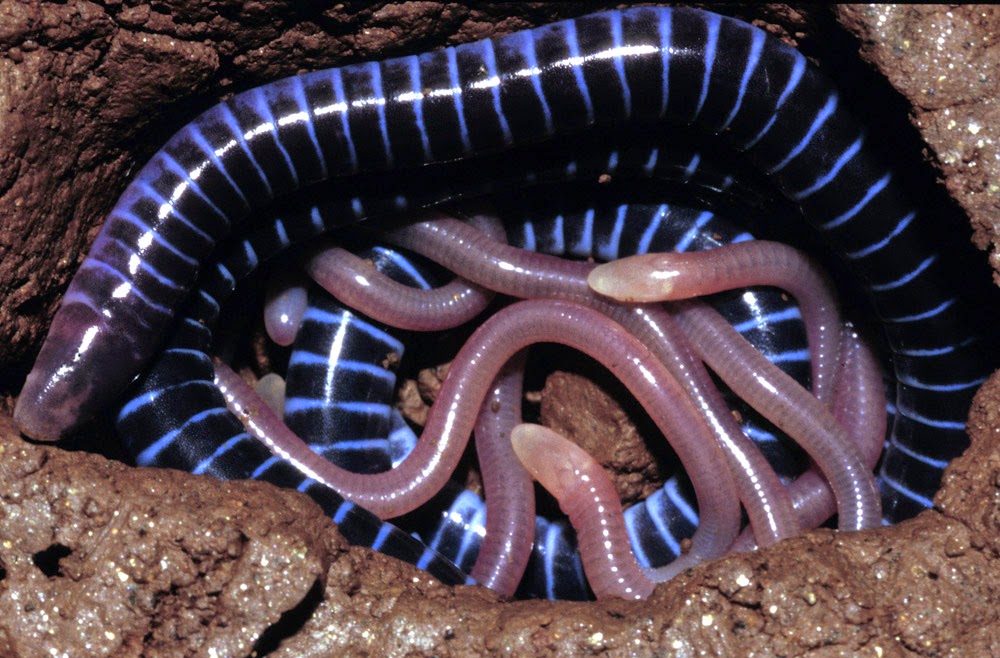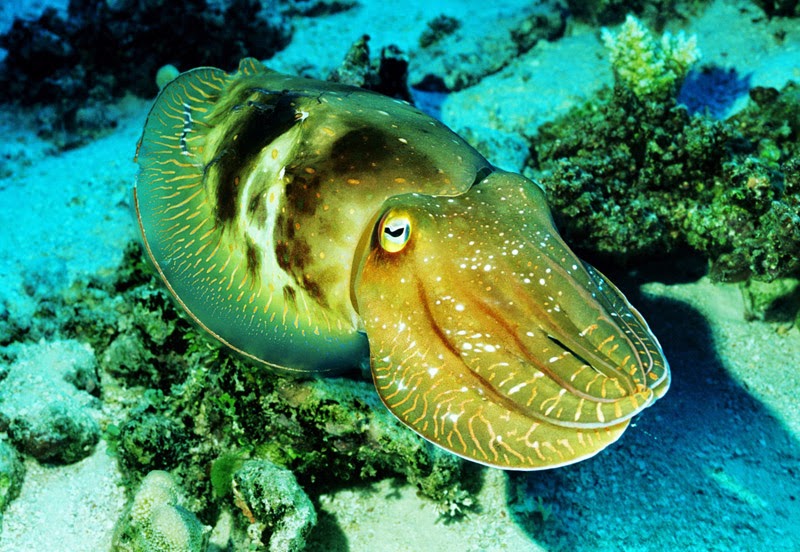Also, we've noticed a nice laurel bush near where I live. The flowers are attracting lots of butterflies, and we've found lots of Red Admirals (Vanessa atalanta) there. Barry, an entomologist friend of ours, says that we should keep an eye on the bush as it may attract rarities!
Anyway, I'll get on with the strange caterpillars now.
Puss Moth caterpillar (Cerura vinula)
The strange-looking caterpillar, with its 2 'tails' and its red-ringed face, is certainly a sight to behold. If it is disturbed, then it rears up like a snake and shows its bizarre head. This, along with a little tail waving, usually scares off any potential predators. If it doesn't work though, the caterpillar has another trick - it squirts formic acid from its head.
Before the caterpillar pupates, it changes colour to orange then purple, then it will spin a silk cocoon and stick pieces of bark to it for camouflage.
Harris Three Spot Moth (Harrisimemna trisignata)
The adult, with its attractive markings, is quite a nice moth. In comparison, its caterpillar looks pretty ugly and dull. However, this wide-spread little caterpillar has an amazing survival strategy. Not only does it mimic bird droppings to avoid predators, but it uses heads as clubs! Sounds more like an ogre's weapon, not that of a little caterpillar. This larva retains its shed heads from previous moults, and attaches them to long, stiff hairs. If its bird dropping disguise fails, then it will force the predator to retreat by clubbing it with its heads. If that isn't strange, then I don't know what is.
Southern Flannel Moth caterpillar (Megalopyge opercularis)
Just when you thought that things couldn't get any more bizarre, you saw that fluffy thing. Believe it or not, it's a moth caterpillar! Because of its slight resemblance to a Persian cat, it is sometimes called the Puss Moth caterpillar. Because of the other species that goes by the same name, I'll stick with the caterpillar's other name - Southern Flannel.
The long, fur-like setae looks like it would be very nice to touch and stroke. If you live in an area where Flannels can be found (United States, Mexico, and Central America) then DON'T touch it! The caterpillar has venomous spines concealed amongst its 'fur', and if these spines puncture your skin, the effects can be very severe. Nausea, rashes, numbness, head ache, swelling, and even difficulty in breathing have all been reported.
Lobster Moth caterpillar (Stauropus fagi)
Named because of the larva's slight resemblance to a lobster (personally, I can't really see the similarity), this is probably the weirdest caterpillar in the UK.
When
the caterpillar hatches from an egg, it looks strangely like a
stretched out ant! It also wriggles if disturbed, in a manner similar to
an injured ant. Ants can bite and sting, so perhaps this
is why the caterpillar mimics an ant - to trick predators into thinking
that it could inflict pain.
As the caterpillar grows and moults, it grows stranger. It's front limbs lengthen and its anal segment becomes enlarged. When it hangs motionless from a branch, it looks rather like a dead leaf. If this camouflage fails, then it will raise its long legs in a threatening posture.
This amazing caterpillar can grow up to 7cm long!
Glass Jewel Moth caterpillar (Acraga coa)
This is my number 1 strangest caterpillar. Both the larva and the adult are pretty strange - the caterpillar is translucent and looks like it's made of blown glass, and the moth looks like it's got furry boots on.
The caterpillar was discovered on a mangrove tree leaf in Mexico, 2012. The reason for the larva's translucent body is unknown. Like its relatives, it is quite slimy. Members of its family are sometimes called 'slug caterpillars'! The sliminess is thought to deter predators and make them distasteful and difficult to get a hold on.
Other than that, we really don't know much about the Glass Jewel caterpillar. More research will be needed before we will be able to fully understand this amazing creature.
Until next time, keep on the wild side!



























